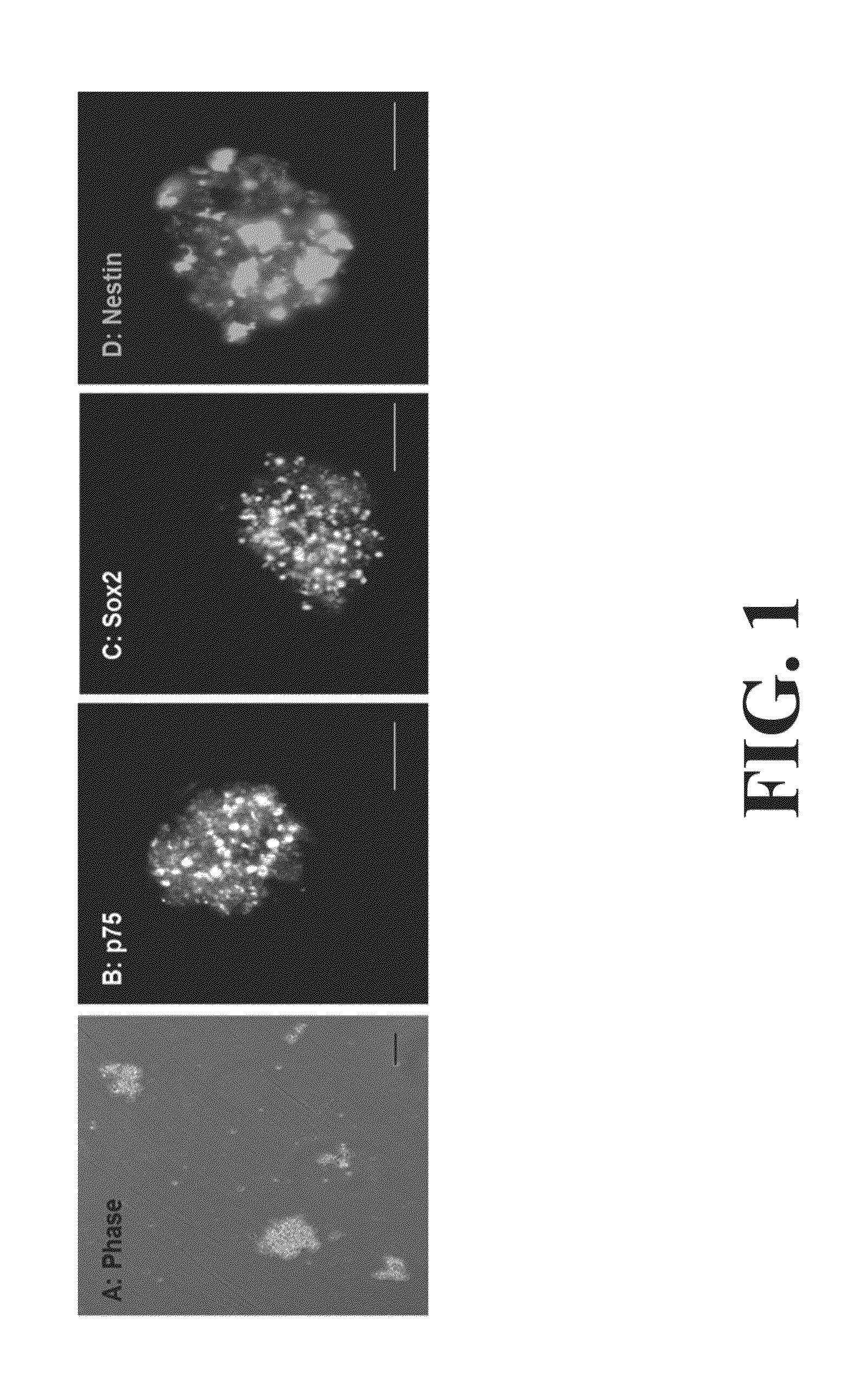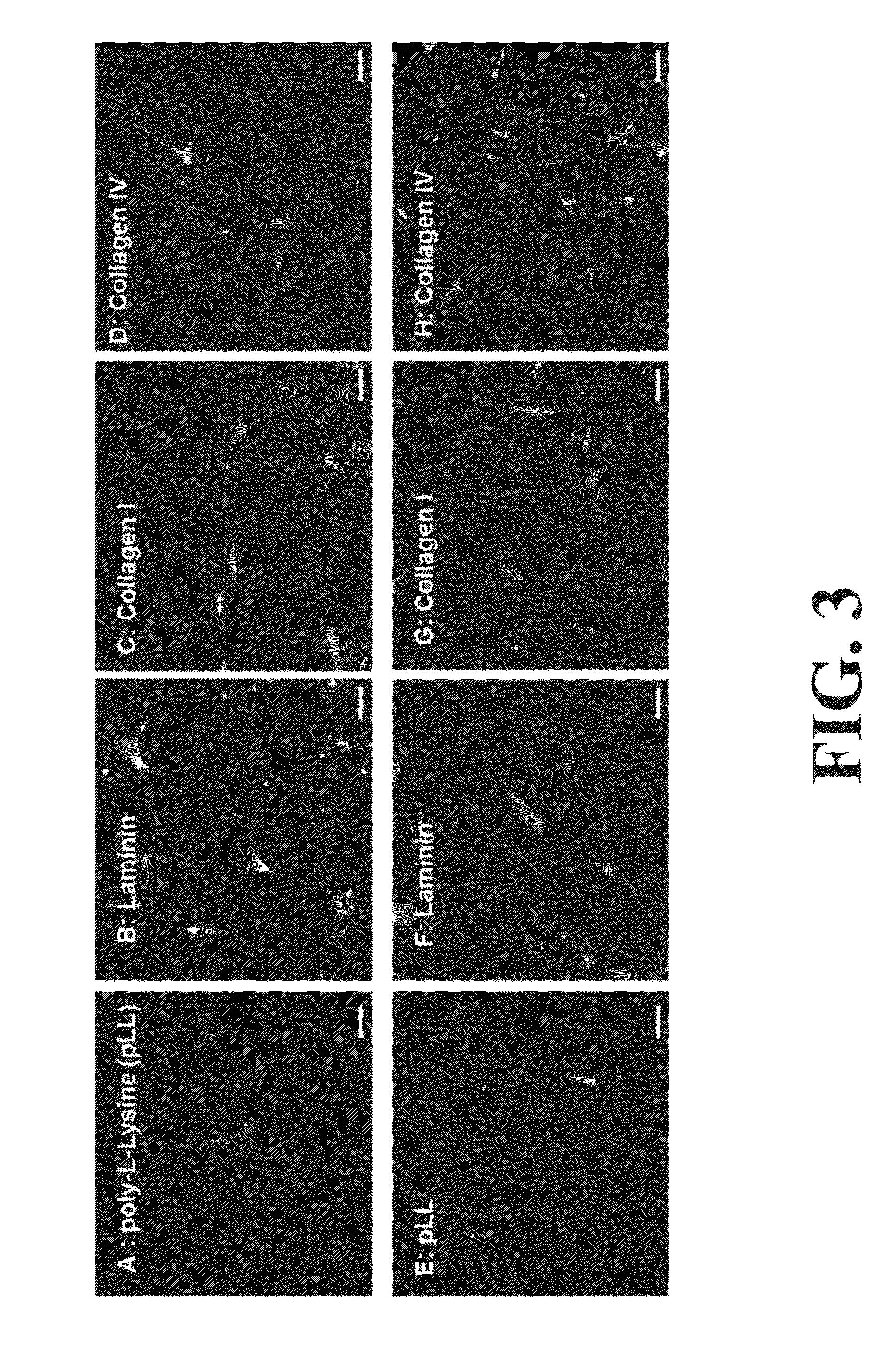Neural Progenitor Cell Differentiation
a neural stem cell and differentiation technology, applied in the field of tissue engineering, can solve the problems of limited studies, little information or understanding of microenvironment-driven differentiation, and the restoration of nerve functions by neural stem cell transplantation as a treatment for nerve-loss associated disorders, and achieve the effect of increasing the differentiation efficiency of transplanted nscs and restoring motor function
- Summary
- Abstract
- Description
- Claims
- Application Information
AI Technical Summary
Benefits of technology
Problems solved by technology
Method used
Image
Examples
examples
Reagents
[0091]All tissue culture reagents were purchased from Invitrogen (Carlsbad, Calif.) unless specified otherwise. Primary and fluorophore conjugated secondary antibodies were purchased from Abeam (Cambridge, Mass.). Rat tail type I collagen and natural mouse type IV collagen were purchased from BD Biosciences (Bedford, Mass.) and laminin was from Invitrogen (Carlsbad, Calif.). Heparan sulfate was purchased from Celsus Labs (Cincinnati, Ohio).
Isolation of Rabbit Enteric Neuronal Progenitor Cells and Intestinal Smooth Muscle Cells.
[0092]New Zealand white rabbits were euthanized using ketamine / xylazine. Smooth muscle cells were isolated and cultured using standard protocols (See, for example, Somara et al. Am J Physiol Gastrointest Liver Physiol. 2006; 291(4):G630-9). For the isolation of enteric neuronal progenitor cells, 5 cm2 biopsies were dissected from the jejunum, and retrieved in Hank's Buffered Salt Solution (HBSS) with 2× antibiotics / antirnycotics and 1× gentamicin sulfa...
PUM
| Property | Measurement | Unit |
|---|---|---|
| pore sizes | aaaaa | aaaaa |
| concentrations | aaaaa | aaaaa |
| concentrations | aaaaa | aaaaa |
Abstract
Description
Claims
Application Information
 Login to View More
Login to View More - R&D
- Intellectual Property
- Life Sciences
- Materials
- Tech Scout
- Unparalleled Data Quality
- Higher Quality Content
- 60% Fewer Hallucinations
Browse by: Latest US Patents, China's latest patents, Technical Efficacy Thesaurus, Application Domain, Technology Topic, Popular Technical Reports.
© 2025 PatSnap. All rights reserved.Legal|Privacy policy|Modern Slavery Act Transparency Statement|Sitemap|About US| Contact US: help@patsnap.com



